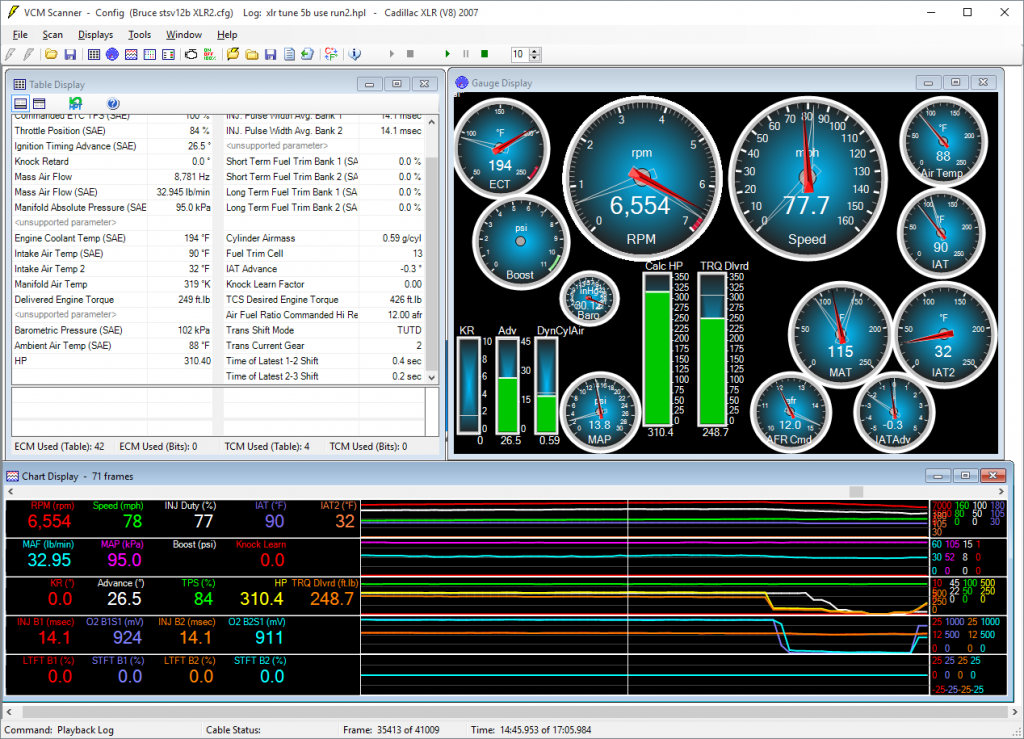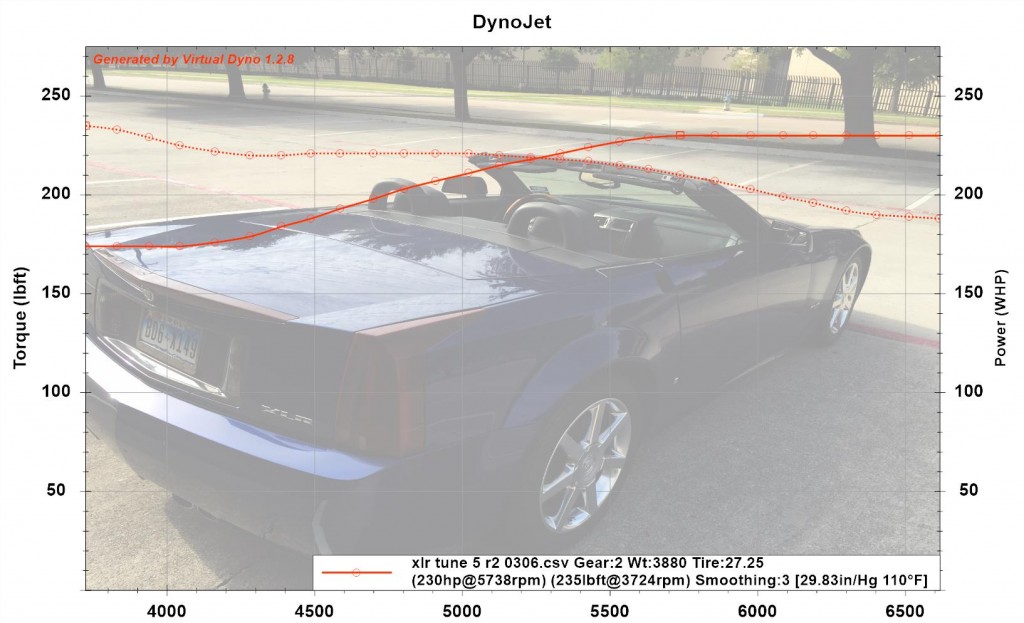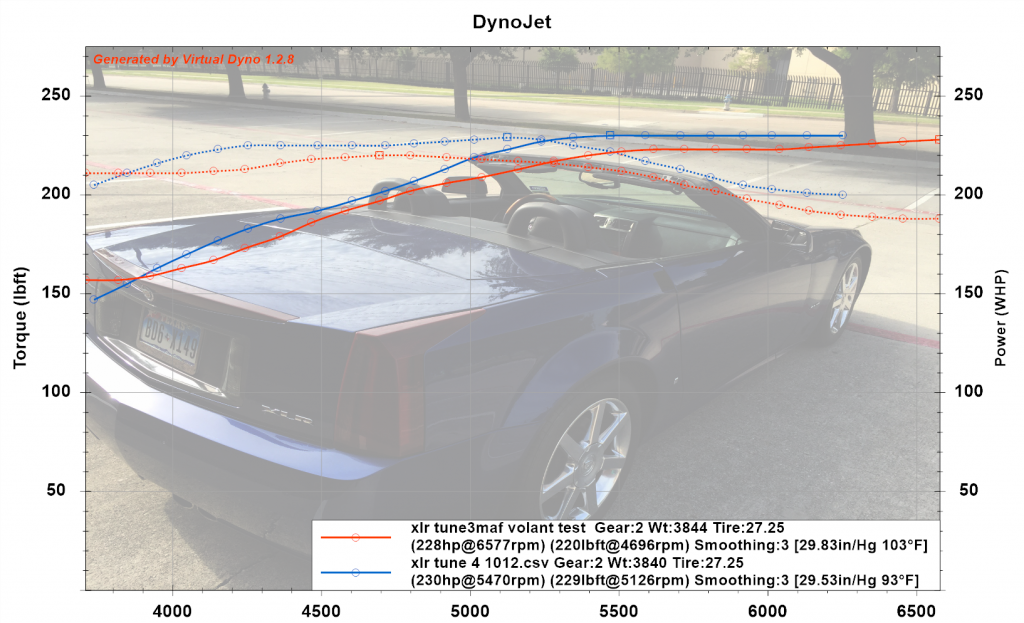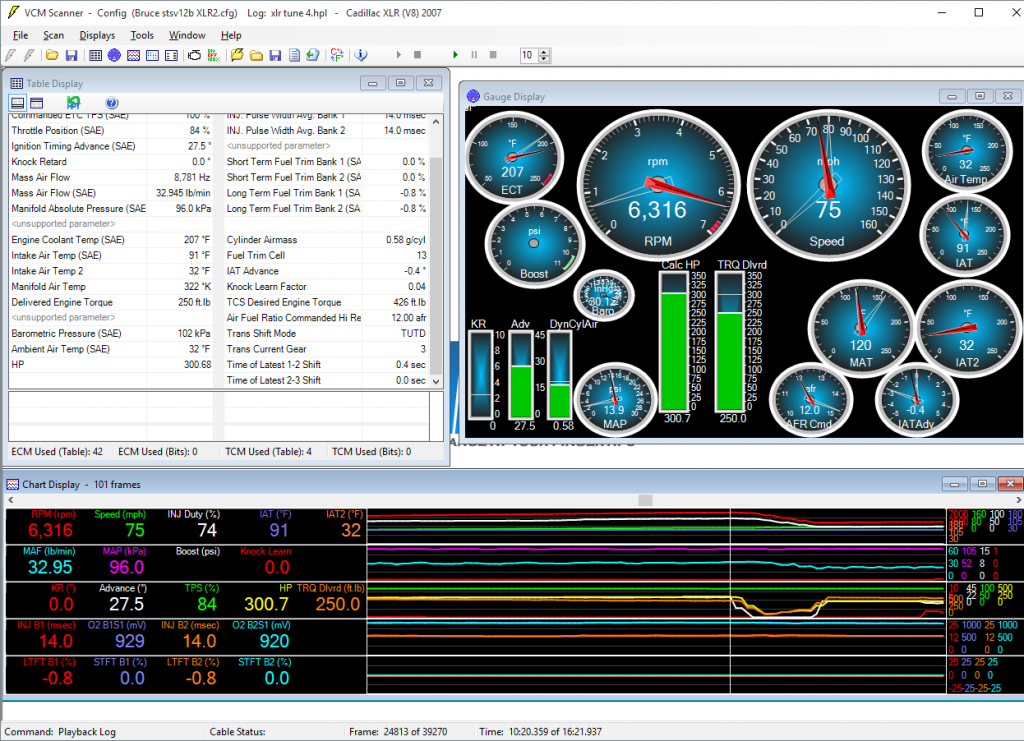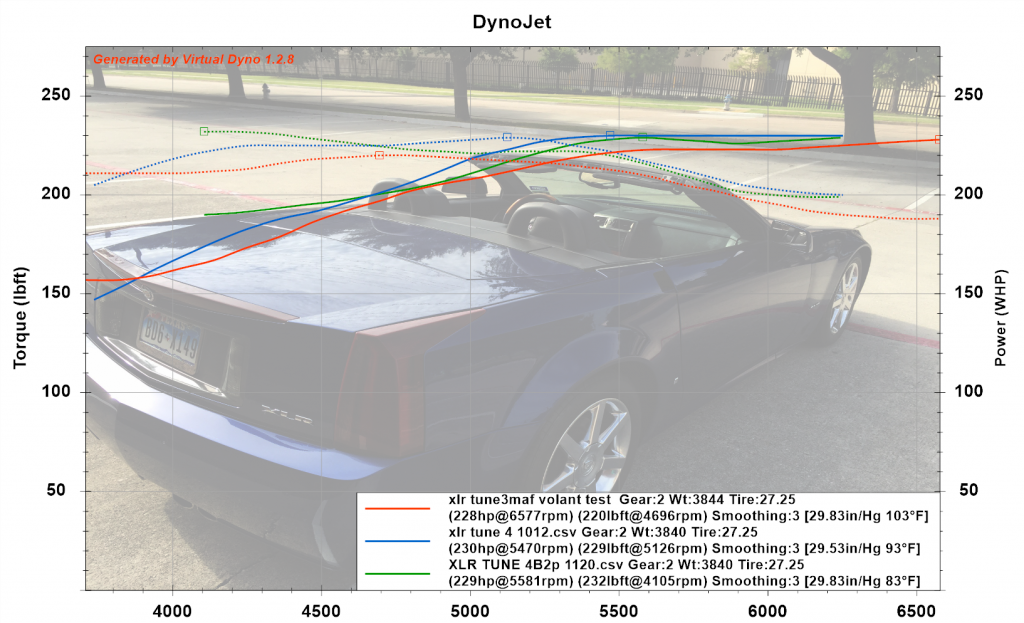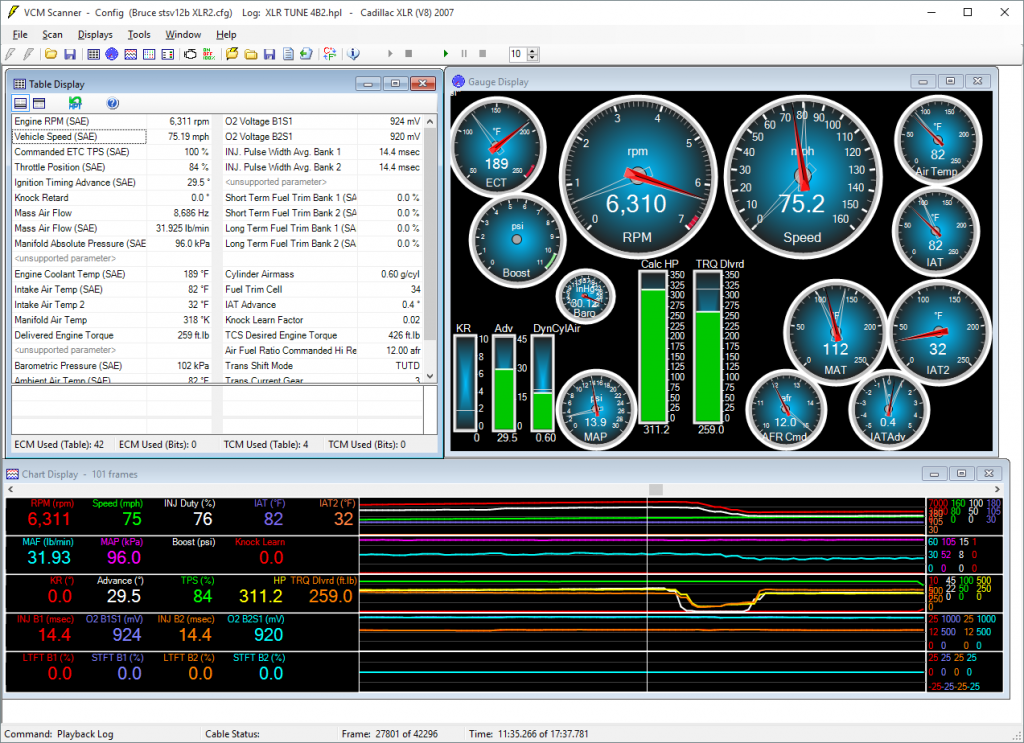Today’s road test is a repeat of the previous test to add to the baseline for Tune 5. The only change from previous was to decrease the TUTD shift speed by 1 mph to 81, and to change the PE ramp from 0.1 to 1.0 (range 0.01 to 2). This value effects how quickly the engine attempts to reach the PE fueling value. Since the commanded air fuel ratio is now set constant from low RPM to high, we would expect this to have impact only just after wide open throttle is reached.
Today’s run is in Blue, and we are comparing to the Tune 5 run in red. What I see is the runs are very close. Today’s somewhat better torque may be an (additional) effect of cooler air, or it may be helped by the PE ramp up. We’ll see how other runs look — certainly I don’t see any disadvantage from the higher PE ramp.
The calculated HP peak was at 6554 RPM. ECT 194F, ambient 88F, Intake air 90F, MAT 115F. Some IAT retard. Peak advance ~26.5 degrees.
Madtuner.com offers a tune for the LH2; they did work on a 2005 STS in 2012 and showed this dyno chart for before / after:
This looks very similar to what I am seeing with the LH2 in my XLR. They had some glitch in the base tune, but I am looking at the shape of the before & after curves — the HP peaks at 5400 or so and is flat until 6000. They stop the scan at 6000 rpm for some reason — I suppose because the engine wasn’t making more power past that. They don’t mention the specifics of their tune.
The Magnaflow performance exhaust for the Cadillac XLR shows a similar shape in the before and after — HP peaking near 5400 RPM and dropping to past 6000 rpm.
GM powertrain showed the LH2 continuing to improve hp until 6400 rpm. Redline is at 6700 rpm. Note that the GM plot is an engine dyno, and the Madtuners and Virtual Dyno plots are hp at the rear wheels, so we expect them to be different due to drivetrain, friction, and aero losses. The part I am considering is the shape of the curve — the engine dyno showed that the LH2 makes a bit more power from 5500-6400 RPM. To be fair, it is not on the same up-slope as 1000-5500 RPM.
Today’s test added to the Tune 5 baseline. The Madtuner result is supportive that there is more to be gained here somewhere. The Madtuner experience closely mirrors my results and varies from the engine dyno. More testing to follow.
If you have ideas, suggestions, encouragement, or advice please hit Reply!


